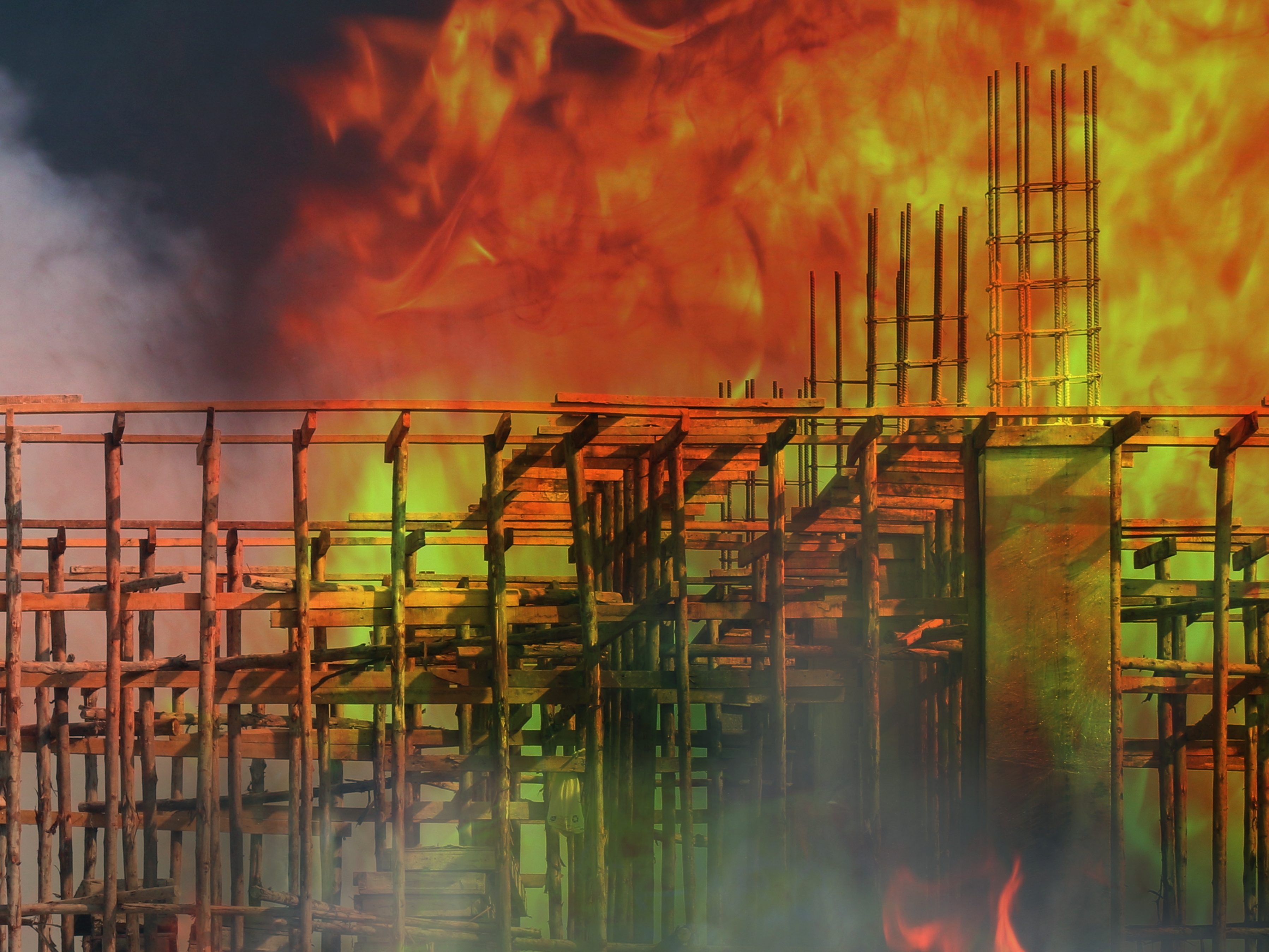
When the roof of Selsey Academy, a secondary school in West Sussex, required repairs in August 2016, it should have been a routine job. But by the end of it, the main school building had been destroyed in a £20m blaze that left 450 pupils in temporary classrooms. The suspected cause of the fire – hot work.
Between the 3 years 2016 to 2018, Zurich has seen the cost of damage claims from hot work spike to more than £250m, and if the impact on lives, businesses and communities was factored in, the real cost would be far higher.
The construction industry already has robust controls in place to mitigate the risks of hot work, such as hot work permits, but with fires continuing to break out, additional safeguards are urgently needed.
Thermal imaging cameras
One possible solution, if used as part of the continuous fire watch, could be thermal imaging cameras. Costing as little as £400, the devices can help to spot smoldering areas before they ignite. When deployed alongside the industry’s existing safety measures, the cameras could detect more hot spots, especially if they are adopted as standard for all non-domestic construction, refurbishment and maintenance projects.
There is no need for the cameras to be high-end. Depending on the work being carried out, the devices only need to detect falling temperatures, or that there are no hot spots either during the work, or for the duration of the fire watch period. Entry-level thermal cameras can do the job, although they should be robust enough to withstand day-to-day use, and have sufficient battery-life and Wi-Fi/Bluetooth connectivity to allow images to be emailed to site managers, if they want to review them.
There are some limitations to the devices. They measure line-of-sight temperature only, so operators should be aware of hidden hazards such as voids or openings (which should be blocked up before hot work starts) and certain materials, such as glass, are opaque to infrared light; but with just a little training, these hurdles could be overcome.
Training
Alongside the use of thermal imaging cameras, dedicated training could also help contractors spot the dangers of hot work. There is evidence from Scandinavia that training in hot work risks can help to substantially reduce related losses.
In the 1980s, the Nordic countries introduced a passport scheme requiring supervisors and contractors to hold a licence to carry out hot work. Under this approach, contractors are obliged to complete a 1-day training course giving them a licence valid for 5 years. This initiative has helped reduce fire losses for hot work to less than 5% of claims paid. By comparison, UK fire losses are at 15% of commercial claims paid.
- Avoid hot work if possible: remove hot work to either a designated workshop,10 metres away from the building and other combustible materials or use flame-free techniques.
- Carry out a risk assessment of the work area: identify all combustible materials within 10 metres or 35 feet of the work area, especially voids, openings and lower levels. A photograph of the work area should be captured to help assist with this assessment.
- Keep a continuous fire watch throughout the task: this should also be in place during any breaks throughout the day and at the end of the hot work. Name individuals who are trained and familiar with the risks and exposures of hot work activities. If thermal cameras are not available, taking photographs of the work area during the fire watch can provide proof of the fire watch activity.
- Follow industry practice: abide by safeguards such as the Safe2Torch Scheme developed by the National Federation of Roofing Contractors.
Zurich has also developed a short video about the risks of inappropriate hot roofing techniques. Hot work losses are continuing to occur, but a combination of approaches involving hot work training, specific task area risk assessments, following industry guidelines and the adoption of thermal cameras could have a dramatic impact on hot work losses.
Gary Strong, RICS global building standards director, comments: “Surveyors specifying and overseeing hot roof work should note these recommendations and help drive down fire incidents.”
“Alongside the use of thermal imaging cameras, dedicated training could also help contractors spot the dangers of hot work”
